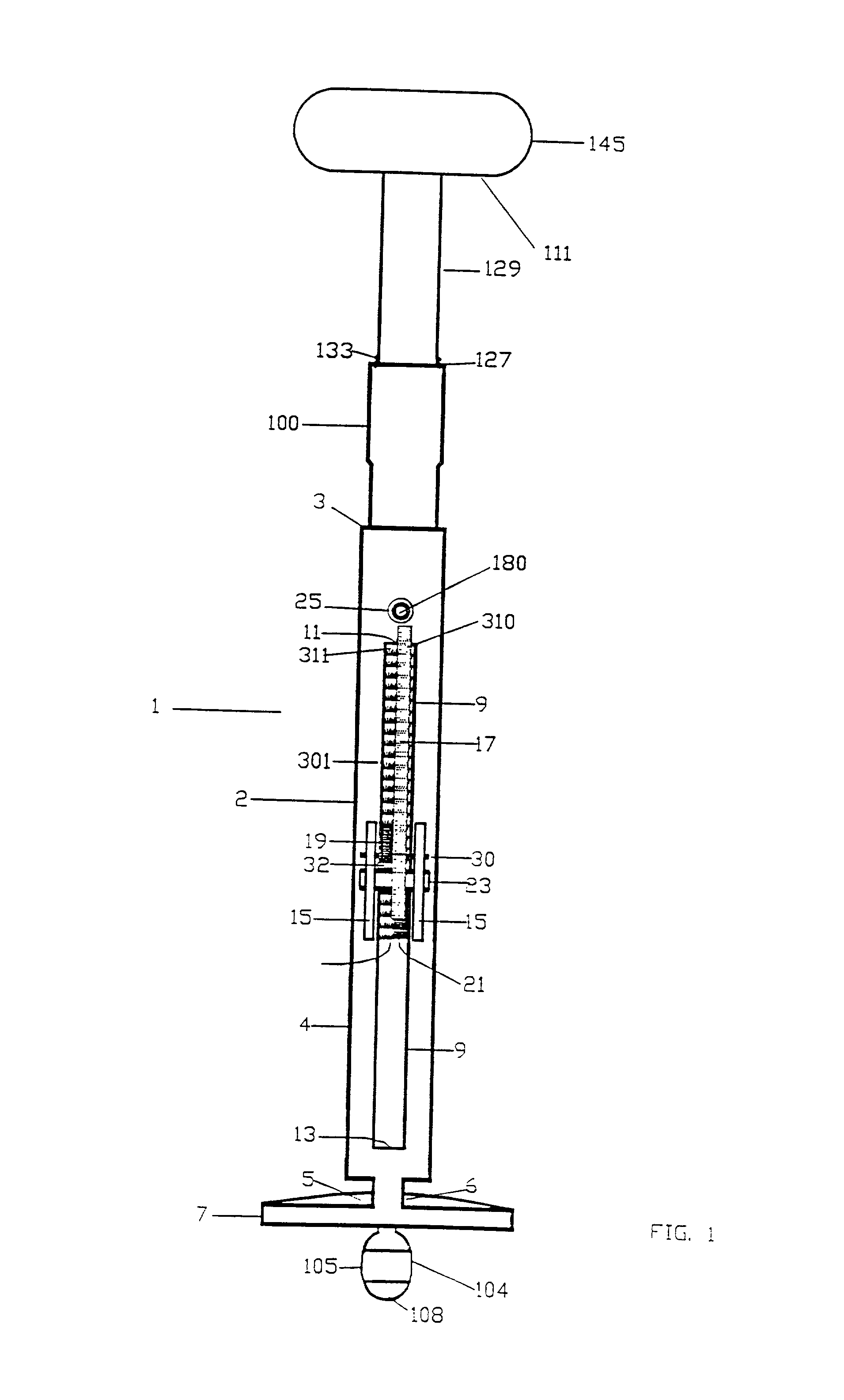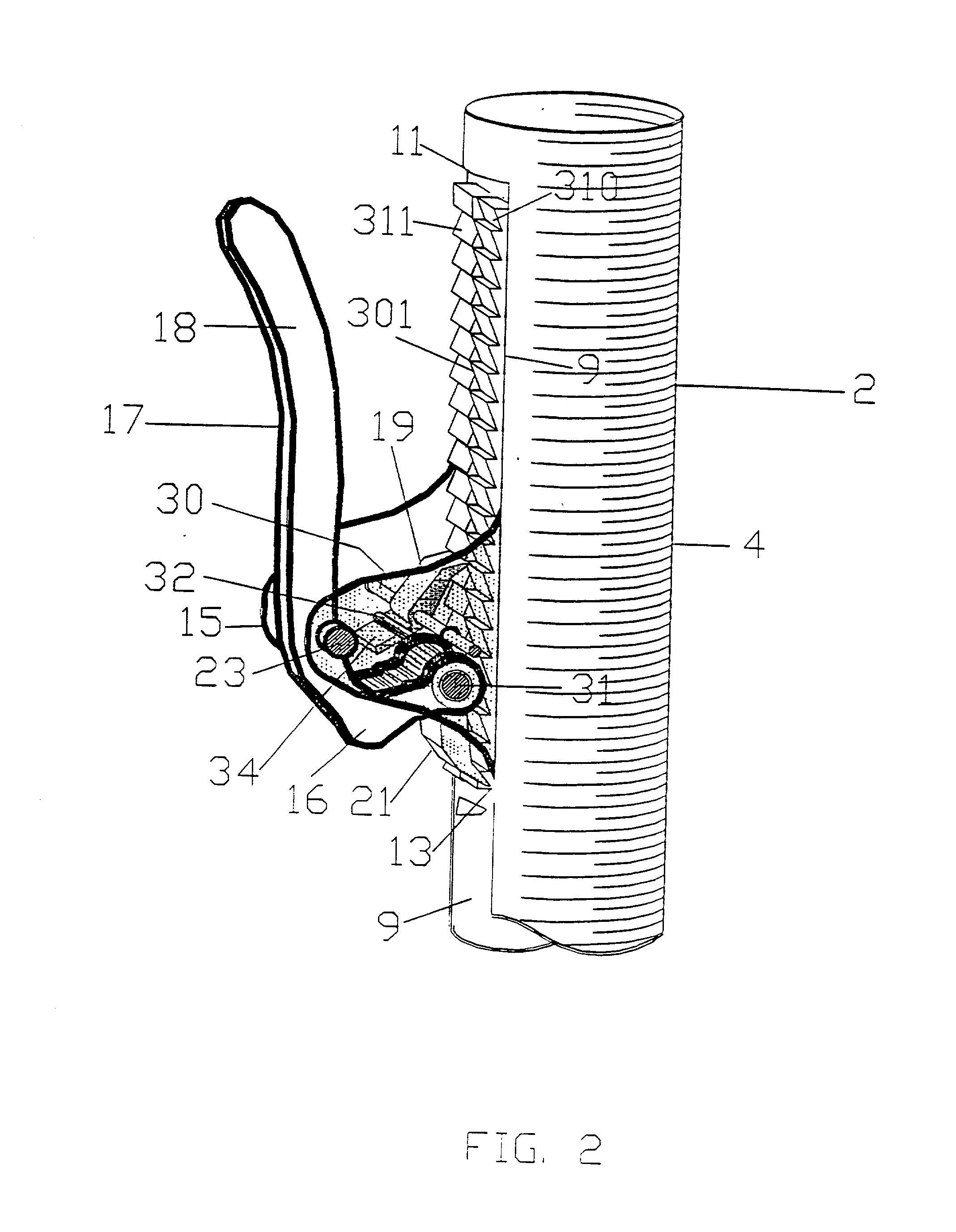Cardiac resuscitation device for percutaneous direct cardiac massage
a direct cardiac massage and cardiac resuscitation technology, applied in the field of cardiopulmonary resuscitation methods and apparatuses, can solve the problems of unreversible brain death, few physicians today are skilled in direct cardiac massage techniques, and rather gross trauma procedures
- Summary
- Abstract
- Description
- Claims
- Application Information
AI Technical Summary
Problems solved by technology
Method used
Image
Examples
embodiment i
[0090] Embodiment I
[0091] In that form of the present invention chosen for purposes of illustration in FIGS. 1-10, a percutaneous cardiac pump, indicated generally at 1, is shown with the actuating mechanism shown in the normal rest position. As best seen in FIG. 3, the cardiac pump 1 is composed of three main components, each of generally cylindrical shape and essentially coaxially mounted: an outer, generally cylindrical, component or support case, indicated generally at 2; an inner, generally cylindrical, component or stem member, or main unit, or stem unit, indicated generally at 100; and an intermediate member, also of generally cylindrical shape, indicated generally at 300, interposed between the stem member 100 and the support case 2.
[0092] The support case 2 is hollow and is of generally tubular, cylindrical shape having an open proximal end 3, a body 4 and a distal end 5, including a narrow neck 6, and a flat, circular base 7. The base 7 is preferably formed of transparent ...
embodiment
[0158] Embodiment VII
[0159] FIGS. 33 and 34 show vet an alternative form of device 1 of FIG. 1 to 10. FIG. 33 is a cross-sectional view of the device generally indicated at 1300. Device 1300 is composed of two main components stem member 1302 and expandable member 1304. Stem member 1302 is composed of proximal end 1303, shaft 1305 and stem end 1306. Stem shaft 1305 is composed of three concentric cylindrical stems, outer 1308, intermediate 1309 and inner 1310. Stem member 1302 is provided proximally with handle 1206 in all similar to the two previously described device 1200 and 1250. Within handle 1206 recess 1207 of handle 1206 is slidably mounted proximal end 1205 of upper stem member segment 1310. Proximal end 1205 of upper stem segment 1310 is of general cylindrical shape as upper segment of stem member 1302 but of larger diameter. Spring or resilient means 1208 urges downward stem member 1302. Circular lid or arrest 1209 in handle 1206 does not permit the exit of stem member 13...
embodiment ii
[0193] Embodiment II
[0194] FIGS. 22 and 23 show an alternative form, generally indicated at 1050, of device 500 illustrated in FIG. 11.
[0195] Device 1050 retains the same safety mechanisms of gaining entry into the chest cavity in front of the heart as device 500 of FIG. 11, including the blunt penetrating tip, while it differs in the way of compressing and decompressing the arrested heart.
[0196] Structure of device 1050 is therefore similar to device 500, except for the following differences. Corresponding parts have maintained the same numbering.
[0197] Device 1050, as shown in FIG. 22, is composed of four main components: support member generally indicated at 1052, stem member or unit generally indicated at 1054, an intermediate member generally indicated at 300, and an inflating-deflating means or device generally indicated at 1008.
[0198] The support member 1052 is the same as support member 2 of FIG. 11 except that, as shown in FIG. 22, it is closed by top wall 1053. It also has...
PUM
 Login to View More
Login to View More Abstract
Description
Claims
Application Information
 Login to View More
Login to View More - R&D
- Intellectual Property
- Life Sciences
- Materials
- Tech Scout
- Unparalleled Data Quality
- Higher Quality Content
- 60% Fewer Hallucinations
Browse by: Latest US Patents, China's latest patents, Technical Efficacy Thesaurus, Application Domain, Technology Topic, Popular Technical Reports.
© 2025 PatSnap. All rights reserved.Legal|Privacy policy|Modern Slavery Act Transparency Statement|Sitemap|About US| Contact US: help@patsnap.com



